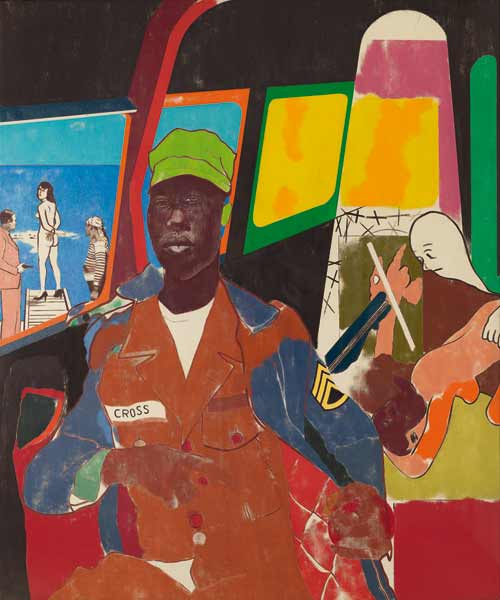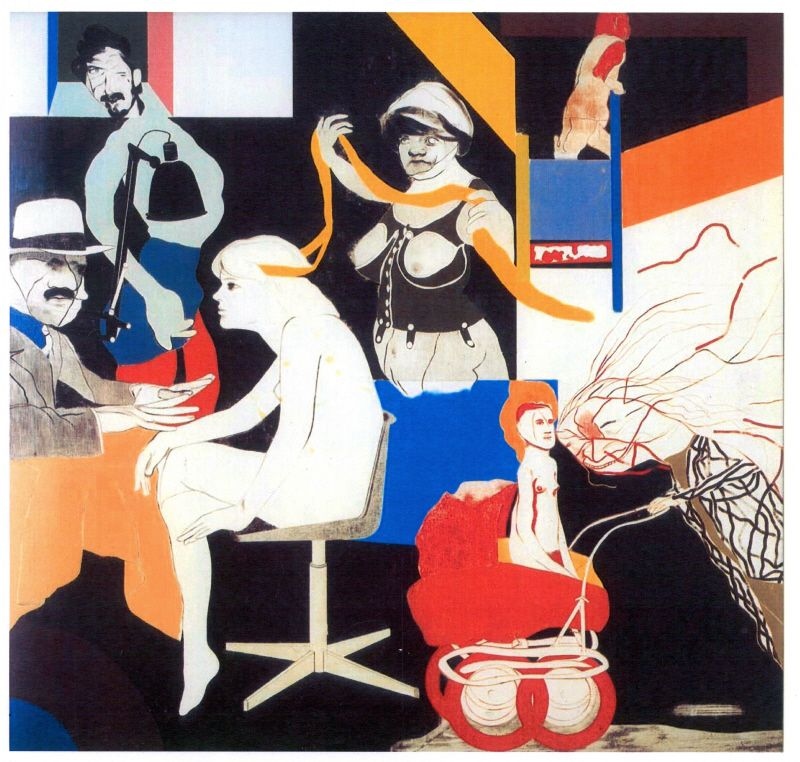 A few years ago, a guest lecturer from New York visited the Berlin synagogue at Fraenkelufer and showed our congregation a new way of practicing an old Rosh ha-Shanah custom, that of tashlikh.
A few years ago, a guest lecturer from New York visited the Berlin synagogue at Fraenkelufer and showed our congregation a new way of practicing an old Rosh ha-Shanah custom, that of tashlikh.
Usually Jews gather for the New Year holiday at the bank of a river and scatter breadcrumbs in the water as a symbolic way of shedding their misdeeds of the last year. The American professor did not strew breadcrumbs in the canal across from the synagogue however; rather, she placed a little homemade paper boat into the water, in which she’d tucked a letter to God. In the letter, she begged for forgiveness for her offences and affirmed her resolutions. The letter also contained thanks for the good experiences of the last year and her wishes for the coming one. → continue reading

R.B. Kitaj, Juan de la Cruz, 1967 © R.B. Kitaj Estate. Astrup Fearnley Museum of Modern Art, Oslo
Only now do I realize, really examining my favorite Kitaj painting closely, that Juan de la Cruz also has those explicit and aggressive sexual components so peculiar to his work: naked women are a vehicle for political messages (here about the Vietnam War) and historical episodes, for instance about St. John of the Cross, St. Teresa of Avila, and their Jewish origins, which I find inherently problematic. Despite this, however, I like the painting: the many powerful colors, the deep blue sea under the brilliant blue sky, the green cap on the soldier’s head, and the yellow behind him. The painting and the contradictions it binds together – the soldier’s finely-drawn features beside the sober geometric forms – they emanate something of summer’s optimism.
For more on R.B. Kitaj, see: www.jmberlin.de/kitaj/en
Christine Marth, Publications
The preparations for the exhibition R.B. Kitaj (1932–2007) Obsessions at the Jewish Museum Berlin have brought me back to Philip Roth. I try to re-read him about every ten years.

R. B. Kitaj, The Ohio Gang, 1964 © R.B. Kitaj Estate 2012. Digital image, The Museum of Modern Art, New York/Scala, Florence
Why? Out of curiosity; to test my feminist – or better and more simply, my feminine – distaste for Roth; to see if my increasing maturity has stimulated some new cognitive process that allows me to encounter the aging, sex-obsessed, white, male ego of the Roth hero with more empathy; or at last to discover exactly why Roth is a reigning great of American literature, which he undisputedly is. It is said that the lecherous puppeteer Mickey Sabbath of “Sabbath’s Theater” is modeled on the author’s neighbor and friend, R.B. Kitaj, but others of Roth’s characters bear traits or biographical details in common with the artist. To sum up, I can’t yet confess that Philip Roth’s characters appeal to me, but I do notice that they have become in a way “historical,” a portrayal of their time. It isn’t dissimilar to the way one enjoys the groping chauvinists of Mad Men, without necessarily wishing to return to the age of oversexed secretaries and mousy housewives. In any case, the projected figure of the artist R.B. Kitaj has grown more vivid, more three-dimensional in my imagination – and I’m all the more excited to get acquainted with the “real” Kitaj beginning in September through the paintings at the Jewish Museum.
For more on R.B. Kitaj, see: www.jmberlin.de/kitaj/en
Signe Rossbach, Events curator
 A few years ago, a guest lecturer from New York visited the Berlin synagogue at Fraenkelufer and showed our congregation a new way of practicing an old Rosh ha-Shanah custom, that of tashlikh.
A few years ago, a guest lecturer from New York visited the Berlin synagogue at Fraenkelufer and showed our congregation a new way of practicing an old Rosh ha-Shanah custom, that of tashlikh.
